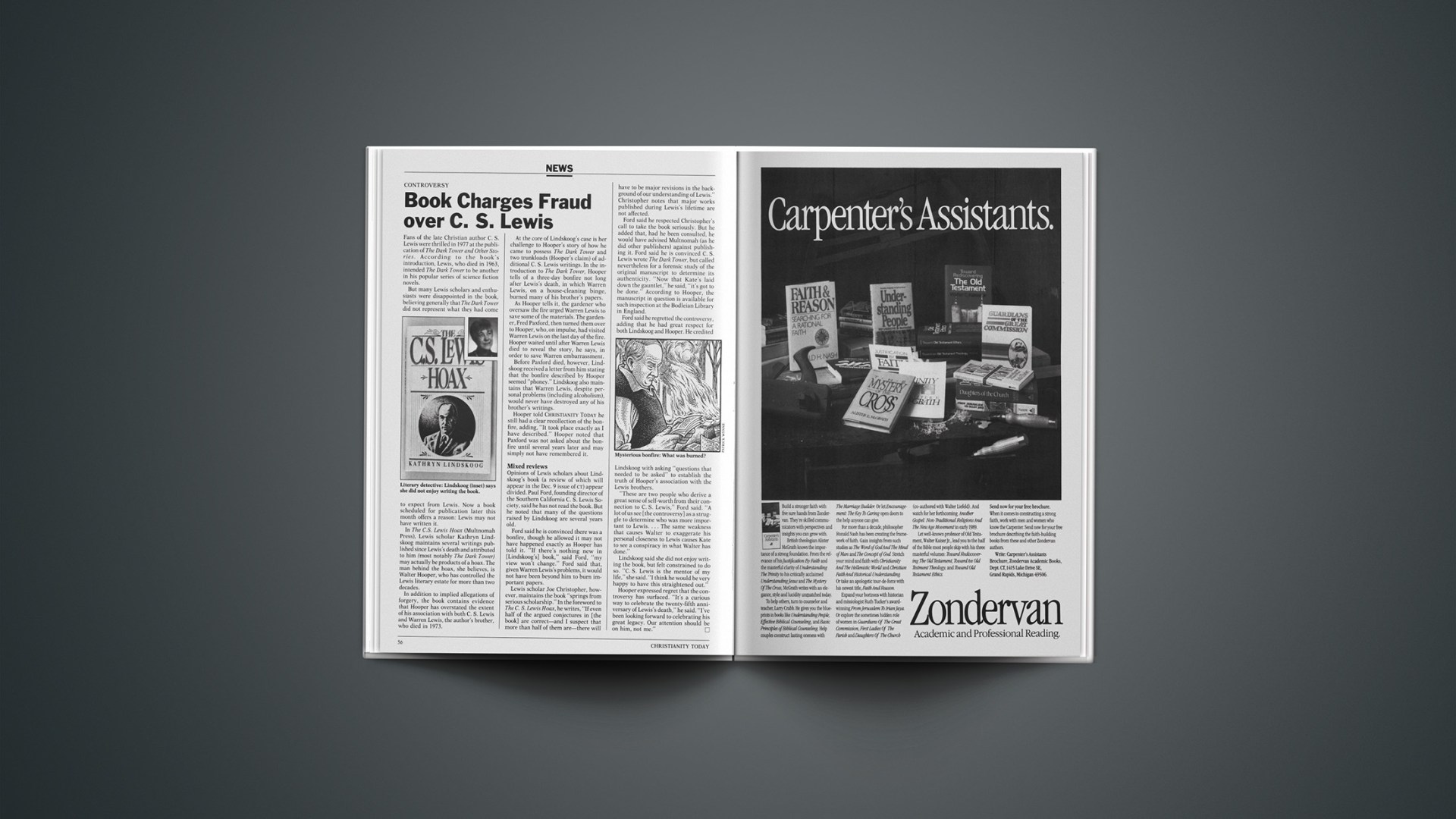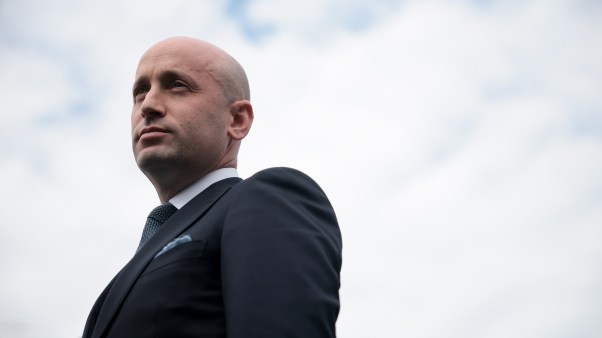CONTROVERSY
Fans of the late Christian author C. S. Lewis were thrilled in 1977 at the publication of The Dark Tower and Other Stories. According to the book’s introduction, Lewis, who died in 1963, intended The Dark Tower to be another in his popular series of science fiction novels.
But many Lewis scholars and enthusiasts were disappointed in the book, believing generally that The Dark Tower did not represent what they had come to expect from Lewis. Now a book scheduled for publication later this month offers a reason: Lewis may not have written it.
In The C.S. Lewis Hoax (Multnomah Press), Lewis scholar Kathryn Lindskoog maintains several writings published since Lewis’s death and attributed to him (most notably The Dark Tower) may actually be products of a hoax. The man behind the hoax, she believes, is Walter Hooper, who has controlled the Lewis literary estate for more than two decades.
In addition to implied allegations of forgery, the book contains evidence that Hooper has overstated the extent of his association with both C. S. Lewis and Warren Lewis, the author’s brother, who died in 1973.
At the core of Lindskoog’s case is her challenge to Hooper’s story of how he came to possess The Dark Tower and two trunkloads (Hooper’s claim) of additional C. S. Lewis writings. In the introduction to The Dark Tower, Hooper tells of a three-day bonfire not long after Lewis’s death, in which Warren Lewis, on a house-cleaning binge, burned many of his brother’s papers.
As Hooper tells it, the gardener who oversaw the fire urged Warren Lewis to save some of the materials. The gardener, Fred Paxford, then turned them over to Hooper, who, on impulse, had visited Warren Lewis on the last day of the fire. Hooper waited until after Warren Lewis died to reveal the story, he says, in order to save Warren embarrassment.
Before Paxford died, however, Lindskoog received a letter from him stating that the bonfire described by Hooper seemed “phoney.” Lindskoog also maintains that Warren Lewis, despite personal problems (including alcoholism), would never have destroyed any of his brother’s writings.
Hooper told CHRISTIANITY TODAY he still had a clear recollection of the bonfire, adding, “It took place exactly as I have described.” Hooper noted that Paxford was not asked about the bonfire until several years later and may simply not have remembered it.
Mixed Reviews
Opinions of Lewis scholars about Lindskoog’s book (a review of which will appear in the Dec. 9 issue of CT) appear divided. Paul Ford, founding director of the Southern California C.S. Lewis Society, said he has not read the book. But he noted that many of the questions raised by Lindskoog are several years old.
Ford said he is convinced there was a bonfire, though he allowed it may not have happened exactly as Hooper has told it. “If there’s nothing new in [Lindskoog’s] book,” said Ford, “my view won’t change.” Ford said that, given Warren Lewis’s problems, it would not have been beyond him to burn important papers.
Lewis scholar Joe Christopher, however, maintains the book “springs from serious scholarship.” In the foreword to The C. S. Lewis Hoax, he writes, “If even half of the argued conjectures in [the book] are correct—and I suspect that more than half of them are—there will have to be major revisions in the background of our understanding of Lewis.” Christopher notes that major works published during Lewis’s lifetime are not affected.
Ford said he respected Christopher’s call to take the book seriously. But he added that, had he been consulted, he would have advised Multnomah (as he did other publishers) against publishing it. Ford said he is convinced C. S. Lewis wrote The Dark Tower, but called nevertheless for a forensic study of the original manuscript to determine its authenticity. “Now that Kate’s laid down the gauntlet,” he said, “it’s got to be done.” According to Hooper, the manuscript in question is available for such inspection at the Bodleian Library in England.
Ford said he regretted the controversy, adding that he had great respect for both Lindskoog and Hooper. He credited Lindskoog with asking “questions that needed to be asked” to establish the truth of Hooper’s association with the Lewis brothers.
“These are two people who derive a great sense of self-worth from their connection to C. S. Lewis,” Ford said. “A lot of us see [the controversy] as a struggle to determine who was more important to Lewis.… The same weakness that causes Walter to exaggerate his personal closeness to Lewis causes Kate to see a conspiracy in what Walter has done.”
Lindskoog said she did not enjoy writing the book, but felt constrained to do so. “C. S. Lewis is the mentor of my life,” she said. “I think he would be very happy to have this straightened out.”
Hooper expressed regret that the controversy has surfaced. “It’s a curious way to celebrate the twenty-fifth anniversary of Lewis’s death,” he said. “I’ve been looking forward to celebrating his great legacy. Our attention should be on him, not me.”










